A trip to Strandir, Iceland (Part 3)
Hi again Steemians! On with the travel storie from Strandir. I hope some of you like old Icelandic sagas as I tell a bit of history in between.
We arrived around 11:00 in the evening on the camping site at Hólmavík and as seen on the first photo it was still rather bright as it never gets totally dark in the night during summers in Iceland.
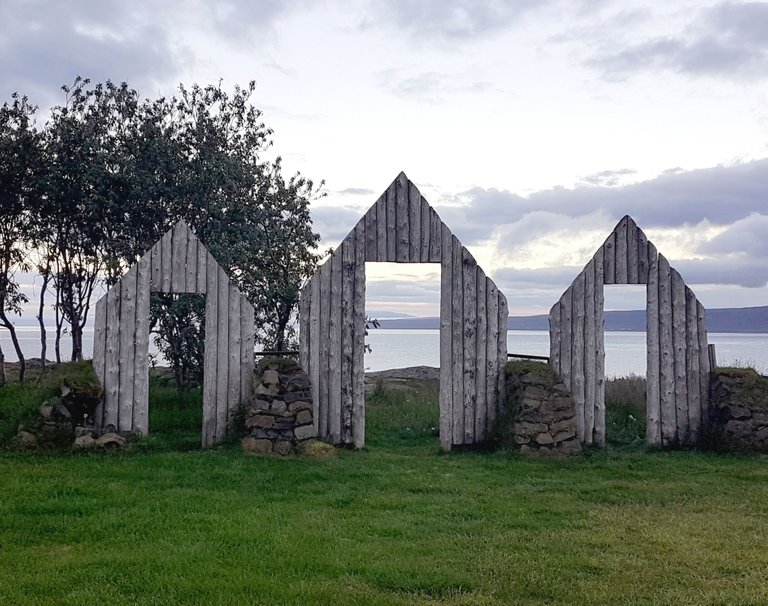
The next day we went swimming in the swimming pool with my sister and her son that had arrived there too. After the swim we went to the wedding of my good friend Ásta and Svanur her partner for last 8 years. They live in a beautiful house down at the main street in Hólmavík where they really have their private beech, grow their own vegetables, hold bee´s to make honey and chickens and gooses for egg´s.
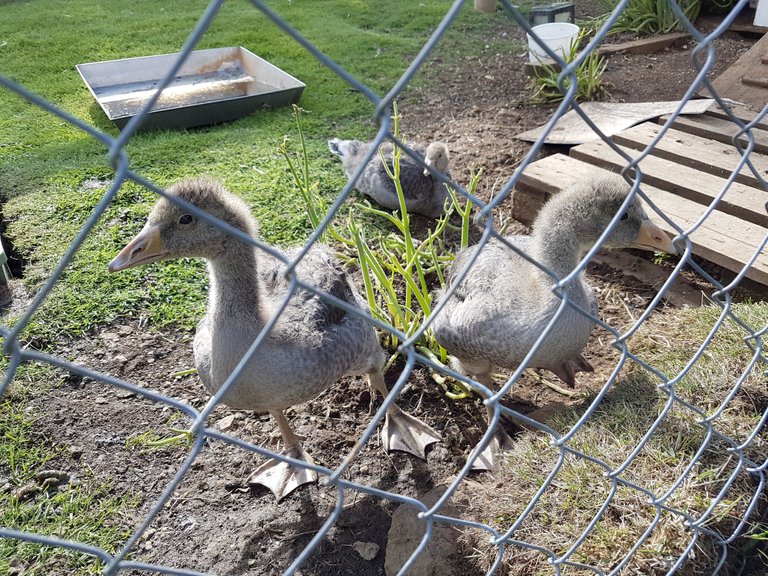
The wedding ceremony took place at their garden but their house is called Sýslið as it is the former county magistrate house (in Icelandic the it is called "sýslumaður" the house shortened to "Sýslið"). The newly wed are artists/designers and the most recyclers I know of. Ásta was the founder of the first recycling store in Reykjavik that sold used furnitures, books and householding items in collaboration with "Sorpa" whom takes care of all the trash in Reykjavík. I used to work there for a while but I got to know her long before that while we both worked at an Art center guiding young people in making props and costumes for the Street theater in Reykjavik (I was not much older than the teens as I was just over 20 and in art school myself).
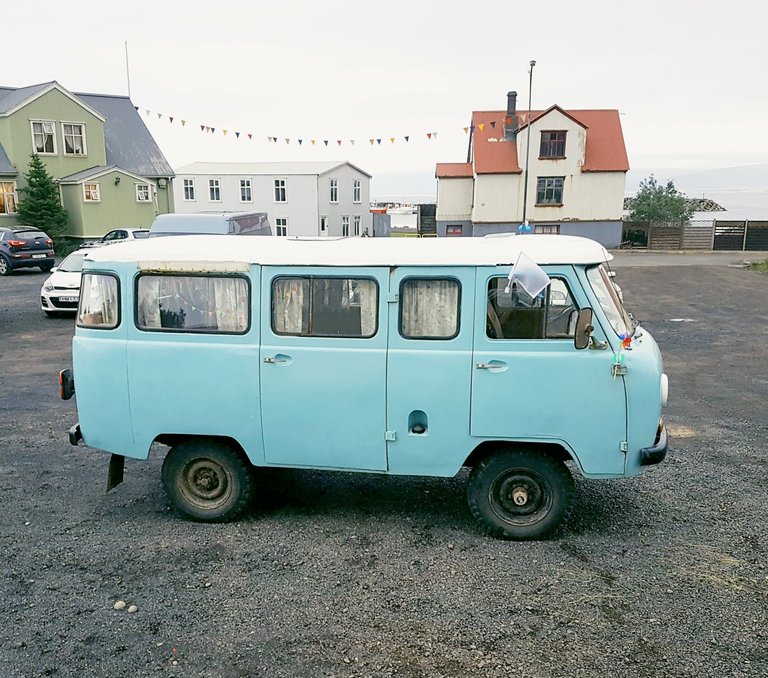
When we were working together in the recycling store "The good sheapard" I bought an old Russian jeep from one of our workmates (also a good friend). This Russian car had been made out as an house-mobile and my mate had driven it on a road trip through Europe as well as lived in the car in Berlin for a while as he was an hardcore activist on the road.
I went two times around Iceland on this old russian jeep but it didn´t go very fast and had a lot of noise while driving. It only had a cassette player in it and I had two cassettes, "Best of Blondie" and "Flachdance" which I played over and over again trying to top the loudness of the engine. But it was a lot of fun driving it. A bit like driving a tractor.
Later we sold Ásta the russian jeep for one Icelandic krona because we wanted someone to take good care of it and neither me noir my husband were much of a car people. Soon after that Ásta started to date Svanur whom now is a dedicated caretaker of the old Russian jeep. When I owned the car it was light-skin colored but now Svanur has painted it blue and of course it was the wedding car for their wedding.
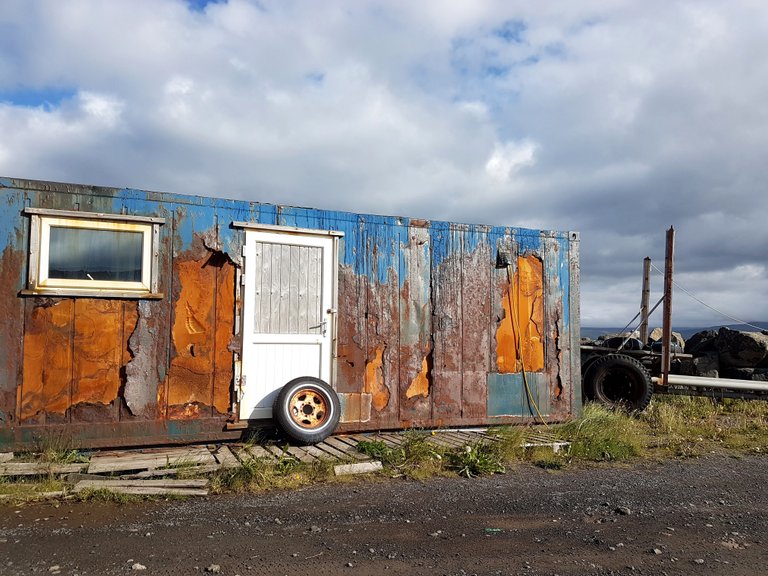
As we had an hour between the cerimony and the party I went for a short photo trip on the harbour of Hólmavík as seen on this rusty sample.
The wedding party was held at a local bunker (the first community center in Hólmavík) and the couple arrived there in the jeep an hour after the garden ceremony. There were a lot of long tables along the walls in the bunker and at the end of each and everyone was a map of a city all of them city´s that the newlyweds had traveled to together. The bunker was all decorated with origami string lights made of maps and small origami boats, fishes and birds as well as a gift box made out of maps. (All af this handmade by them).
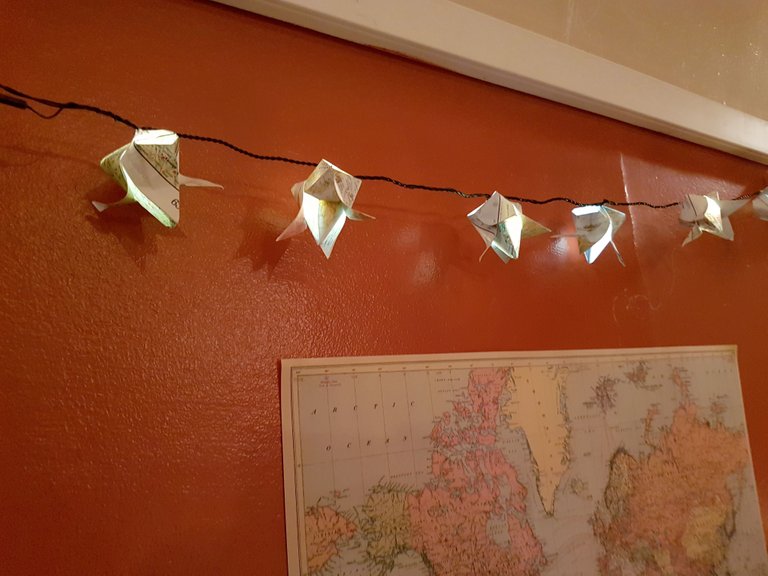
When we opened the gift box we found a teabag with the name Sýsl-te (their house Sýslið-tea) and a jar with honey that said "Honneymoon" and then signed with their names and the wedding date.
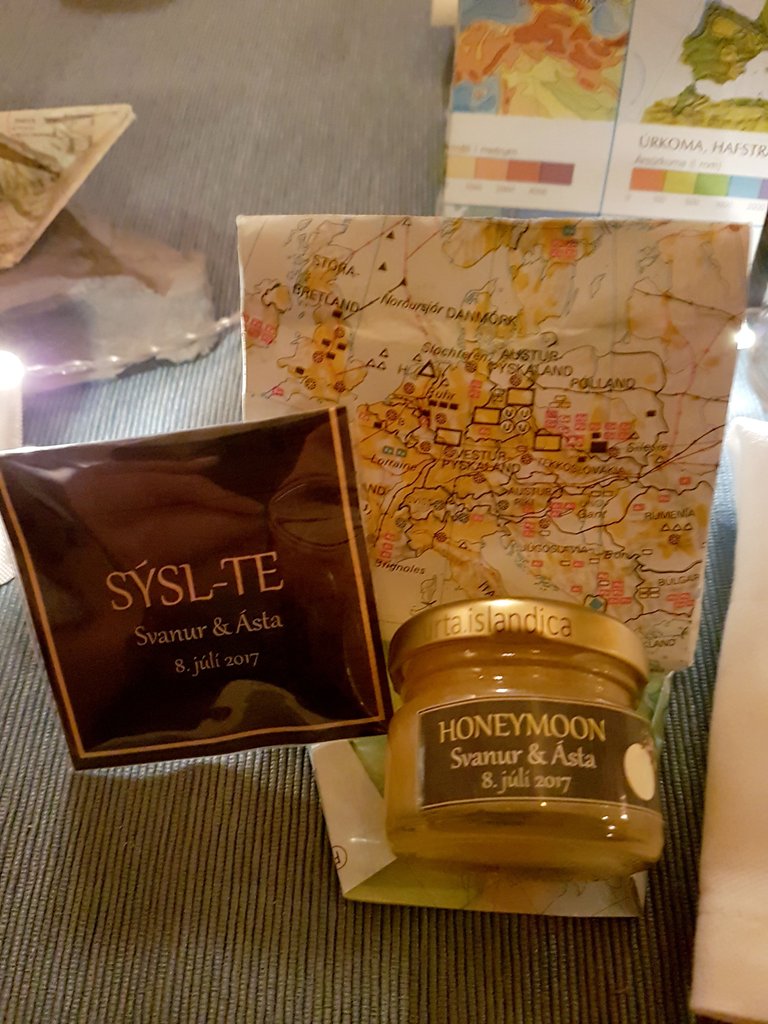
Then they served delicious Indian food and a wedding cake. Some people held a speech and the couple played one funny wedding game. Then the bunker was cleared up to become a dance floor with a life band playing grate dance covers from past 50 years or so. On the second floor of the bunker people could sit for a chat or make their own photo session with costumes and of course a big world map in the background. This was such a fun and we danced a lot through the night.
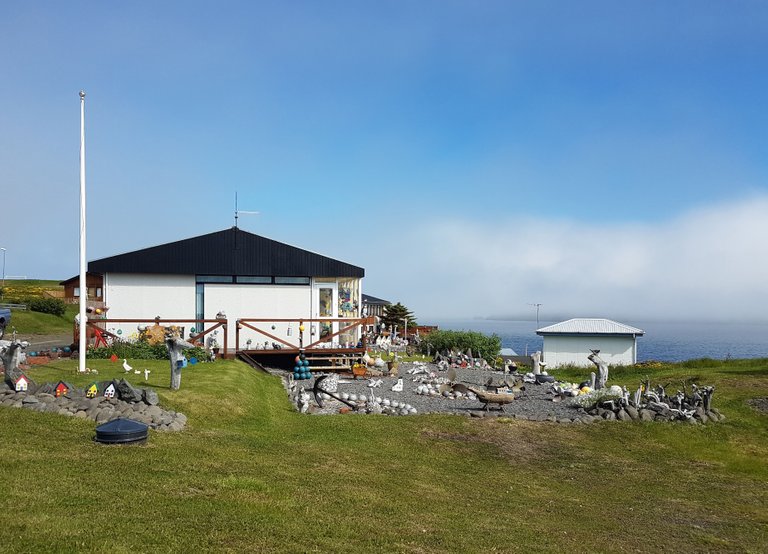
The next day I wanted to take my sister to a trip to Djúpavík inner on Strandir as she had never gone further in this area than Hólmavík. It was a sunny day when we departed but it became foggier on the way. First you drive for 20 minutes over the hills and come to a small village called Drangsnes but my friend Ásta is raised there and lived there for a while few years back. It´s an interesting place as they found hot water over there few years back (there is lack of hot water in this area) but not enough to bring it into house heating but instead they made hot tubs by the main road and people can stop and take a hot bath and a shower by the road if they feel like it. It has became the main meeting place for the inhabitants in the evenings. We didn´t stop there on this trip as we were just driving through Drangsnes this time. But I had to take a photo of this crazy garden in the town. There is a lot of driftwood on the beaches in Strandir and some of the inhabitants have made a lot of creative stuff out of it to decorate their gardens. This on a bit kitsch but amusing and colorful.
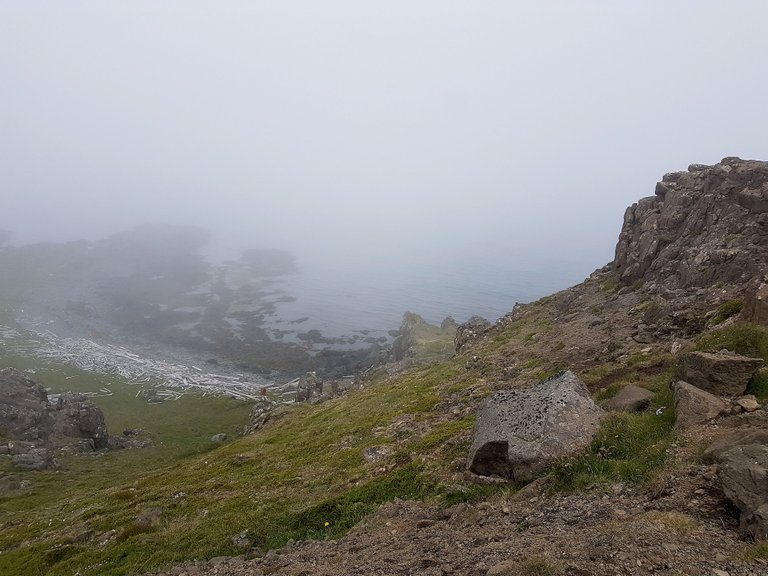
But on we went and as we drove into the fog up and down the tangled roads in the mountainsides with the beeches beneath us you couldn´t avoid thinking about the mistic that is linked with Strandir. There has alway´s been said that the people of strandir were magical people whom could cast spells and do witchcraft. That can be linked to the 17th centry when the witch persecutions of Europe reached Iceland and in small places like Strandir it would become a hot topic and the inhabitants dramatized everything odd and became a bit crazy.
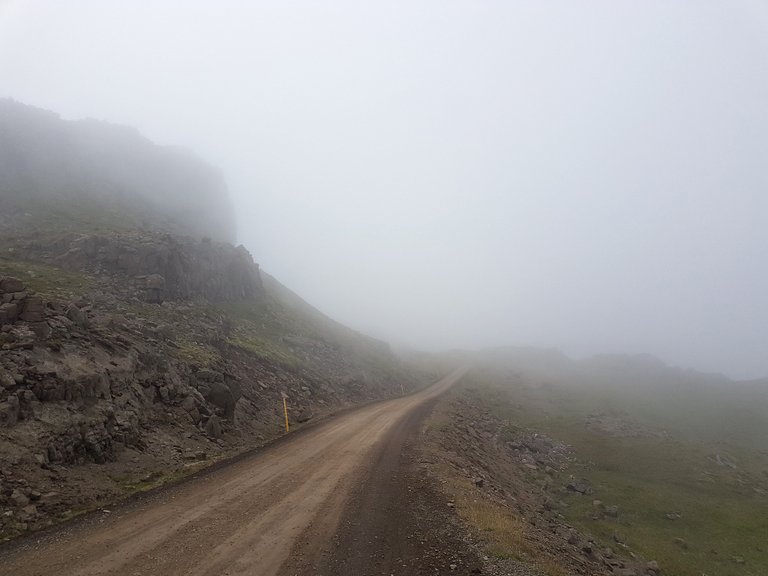
The persecutions started in one farm where there was a young girl working for an older man. When she went home to her parents farm she got sick and when she got back to him she got well again. Then she left home again and again she became sick. She went back to her employer and again she got well. So two of his neighbors accused him of putting a spell on her. Even though Icelanders became Catholic in the year 999 they still held tight to their knowledge of using protective runes (fuþark) and using herbs and natural medicine to heal sicknesses. Sometimes they mixed it all together and it has often been said that Icelanders called for Christian god when needer as well as Oðinn when needer. The nation is still very shamanic in it´s core though we openly practice Lutherian Christianity since the midlle of the 16th century.
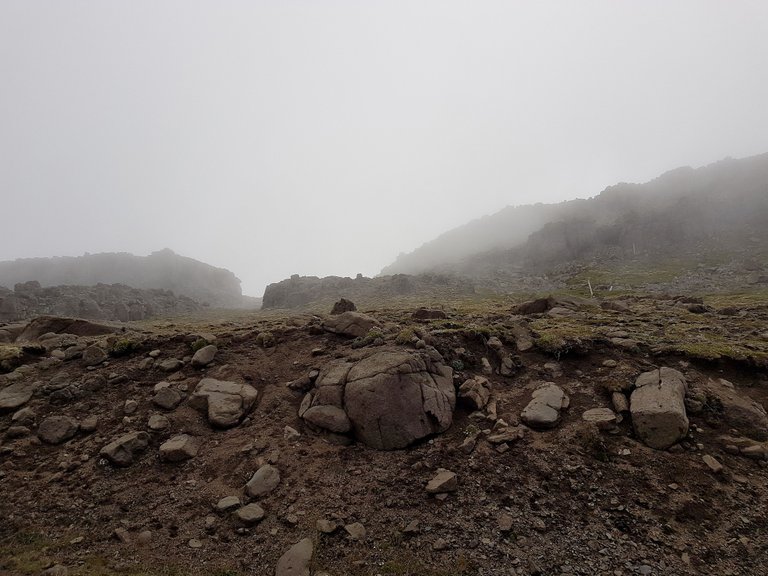
There were 25 people burned or killed for witchcraft in Iceland but most of them were men. Only 4 of them women. Some of them came from Strandir but even so some of the people whom were judged for witchcraft on Alþingi escaped the fire. One of them was for example Jón lærði Guðmundsson. The middle name "lærði" translates as "the educated".
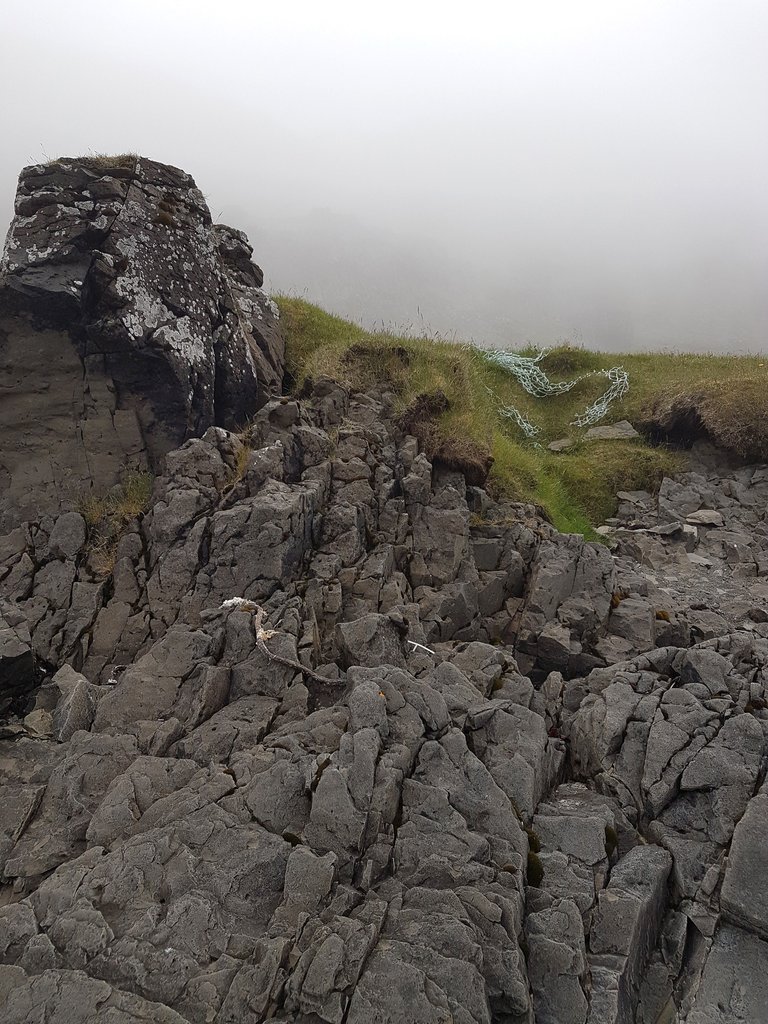
Jón lærði Guðmundsson was born in Ófeigsfjörður the furthest fjord in Strandir but he was a common man but a very smart and good with his hands. He painted, did beautiful carpentry and he wrote and decorated scripts on calfskin. He was also very respected medicine man. The public usually believed that people who could practice medicine and write and read well even old nordic runes were witches of some sort. Jón lærði Guðmundsson was one of them but even so maybe he really was phsycic as well. He was often brought to farms to take down ghosts and then he used bot Christian prayers as well as old nordic magic runes and his own poetry. Many of his poetry and writings has been saved to this day. He had to flee Strandir after an incident and later he was accused of witchcraft.
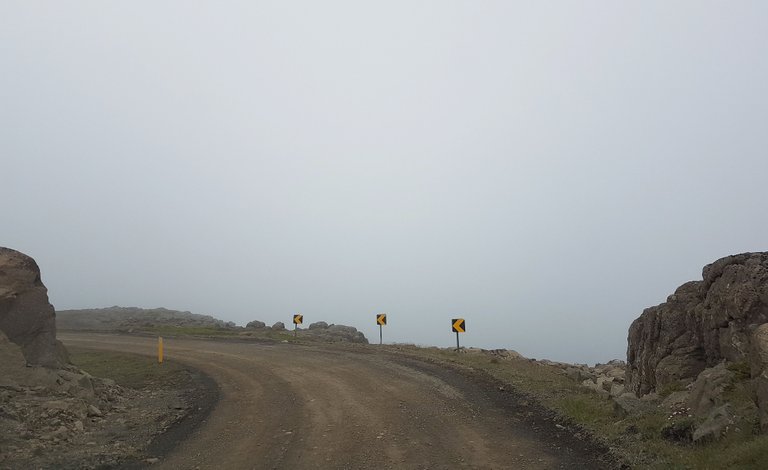
That was actually a political thing because in the year 1615 a ship filled with spanish crew members or Basques stranded in Ísafjarðardjúp and the sheriff Ari in Ögri made his men kill them all instead of rescuing them. Jón lærði Guðmundsson criticized the killings publicly and later wrote a book about it so Ari in Ögri drove him away from Strandir. He moved to Snæfjallaströnd for a bit of time having to leave his wife and children behind and later after teaching people how to use herbs and write and read he was accused of witchcraft.
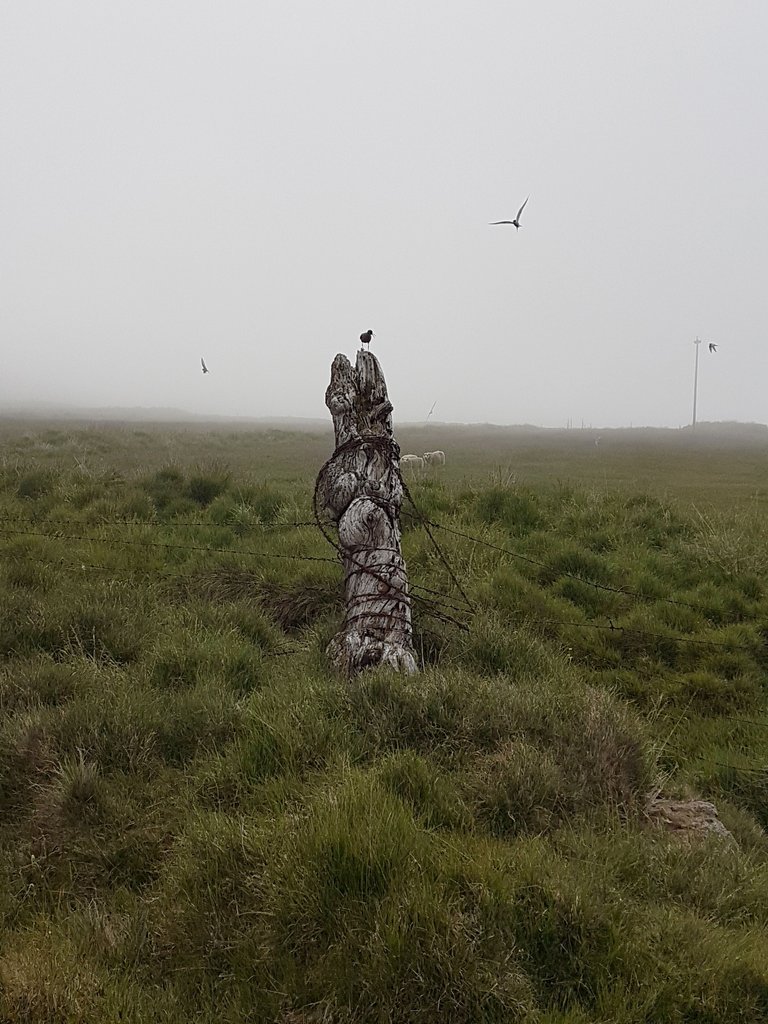
Alþingi did not judge him to be burned on the cast but to be outcasted from the island. As people both respected him and some were probably afraid of his knowledge nobody wanted to ship him overseas so he stayed all his life in Iceland despite being an outlaw. His last years he spent on the east fjords but at times the bishop in Skálholt protected him and payed him to write and decorate his scripts.
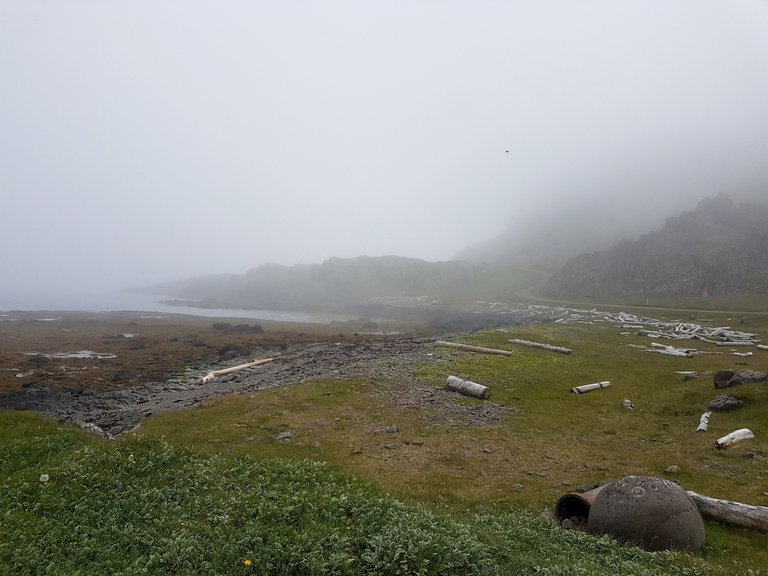
The landscape at Strandir has also been a material for mystical stories and we still have very old stories about trolls and elfs many of whom became stones and you can see them outlined in the clifts and the mountains.
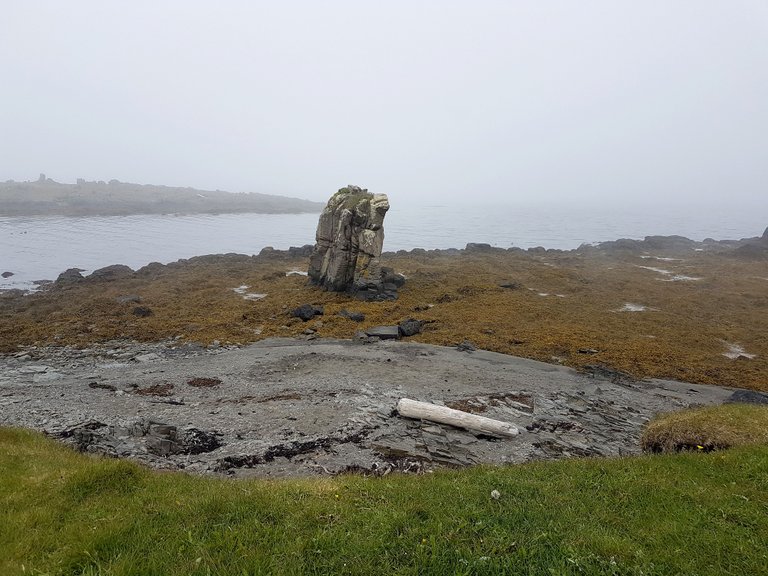
We stopped in one beach as me and the kids wanted to collect shells and search for bones and stuff. They were of cours excited about the story I told them from my first trip to Strandir with my son (then the same age as my daughter is now (11)). He found a head of a horse in Ingóflsfjörður on Strandir and we told him he couldn´t take the head in the car as it still had meat on it. He then asked for a knife and spent a long time on the beach scraping the meat of the horse head. Then we put it in a black plastic bag and took it home where it became clean over long period of time in the garden. I now have this horse skull in my art studio along with a skull of a raindeer whom my daughter found few years back in our beach in Kópavogur.
But I had to take a few close up photos as well on the beach.
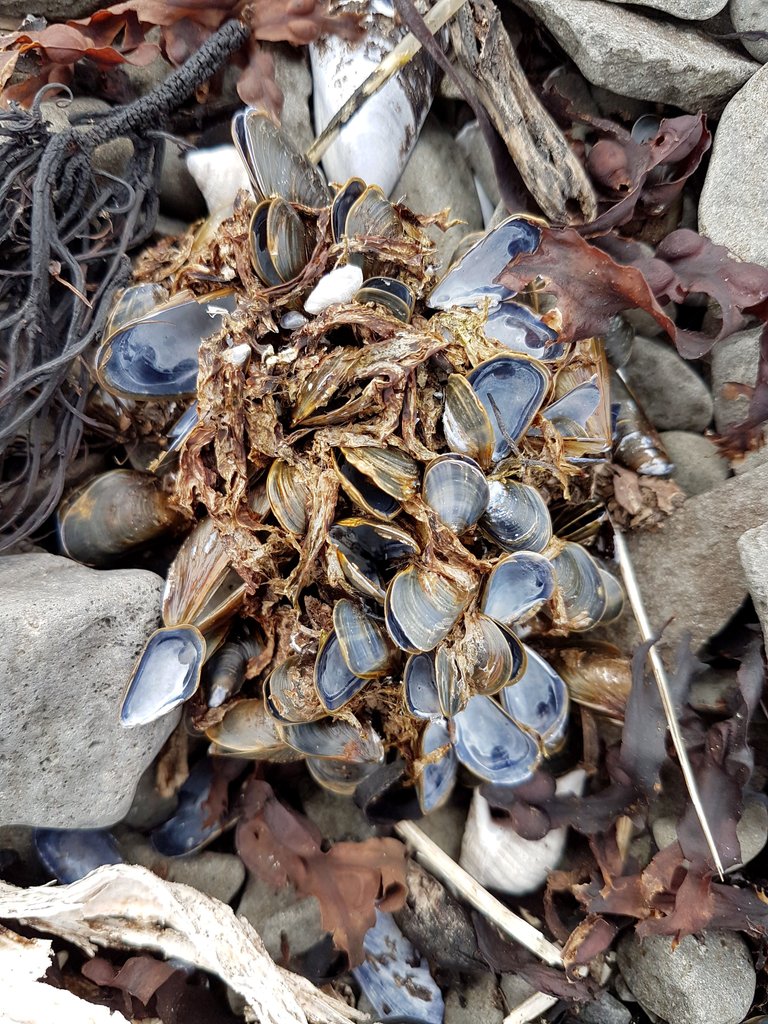
We didn´t find a horse skull but we found a few big bones that we couldn´t identify but then my daughter found this creepy bird skeleton.
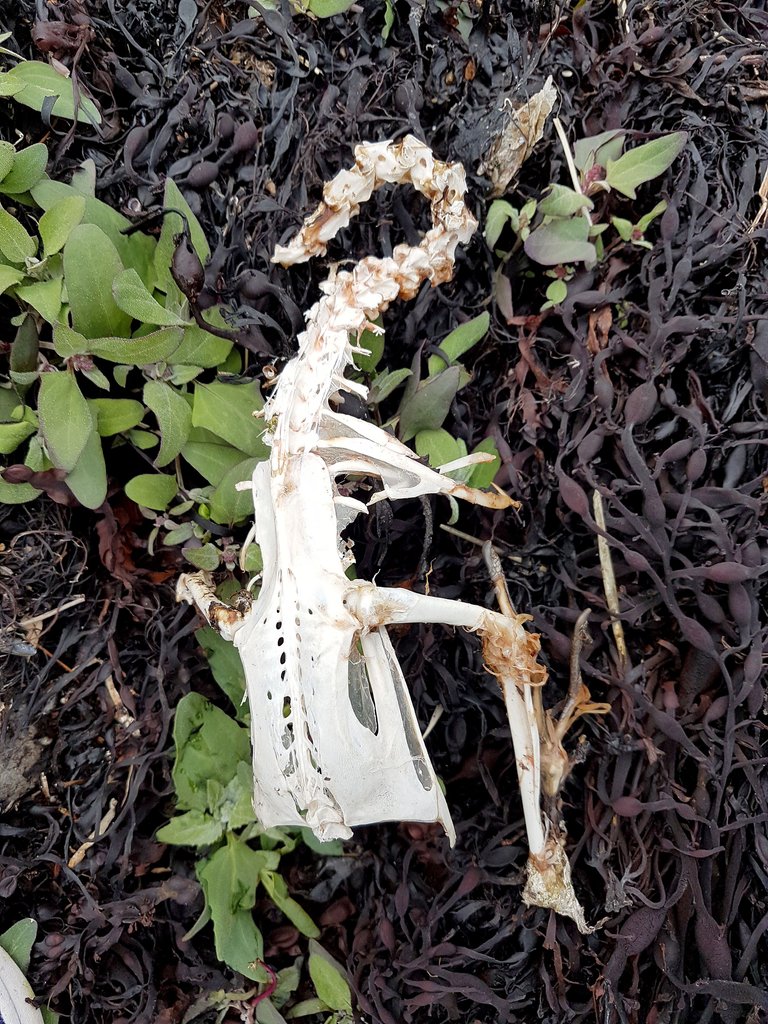
I also found a bit cuter things...
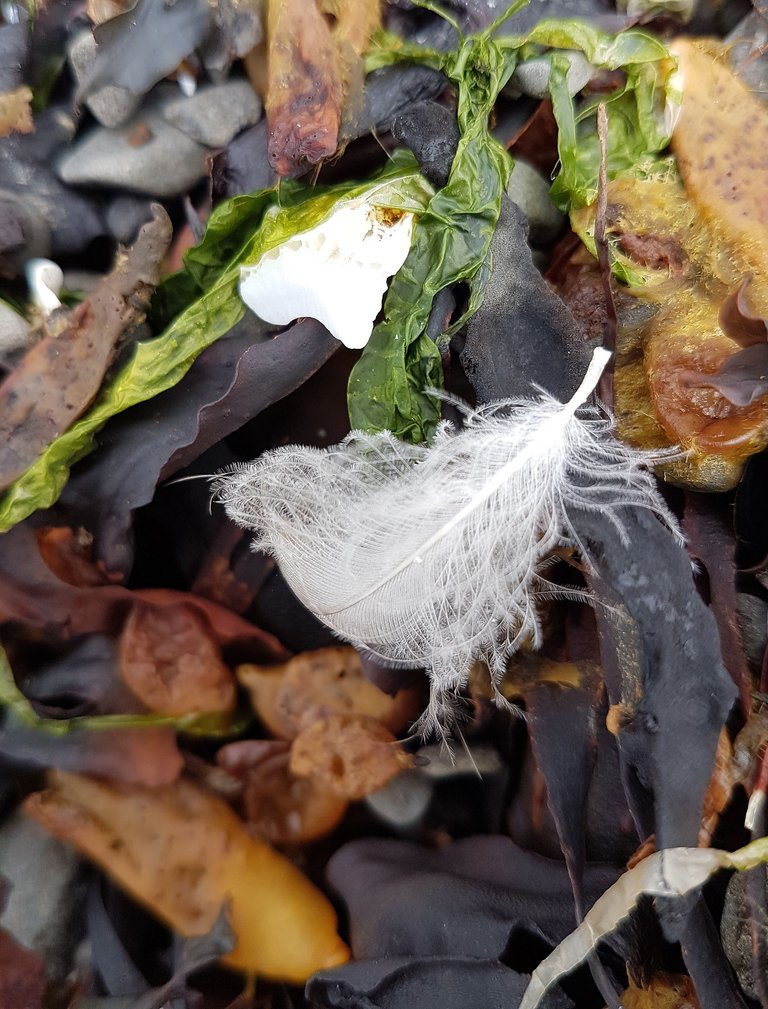
Then a single tourist found me and asked me if he was on the right track to Djúpavík wish I confirmed. He was from Seattle USA and was traveling alone with a sleeping bag in his car. My syster was not so happy about that as we have a bit of a tourist problems in Iceland these day´s. It is expencive to rent a car in Iceland and very expencive to buy a hotel or a motel room so tourists are sleeping in their cars on parking spaces and here and there in the country. The result is that they don´t have access to a toilett. We all know what that means and it can be disgusting when you are going to stop on a road bench to eat your lunch and you start to smell something bad and even see toilette paper laying around. It is a problem and as we have a big country with long distances between diners (toiletts) this is a problem. But of course I didn´t say that to my Seattle tourist. I only asked him if he was checking in with people every day. There can be horrible accidents in Icelandic nature. This same day two foreign tourists had fallen from a clift and died while hiking. That was in another place but the landscape in Iceland is dangerous if you go hiking or even if you go to certain beaches the waves can easily grab you into the Atlantic oceaon.
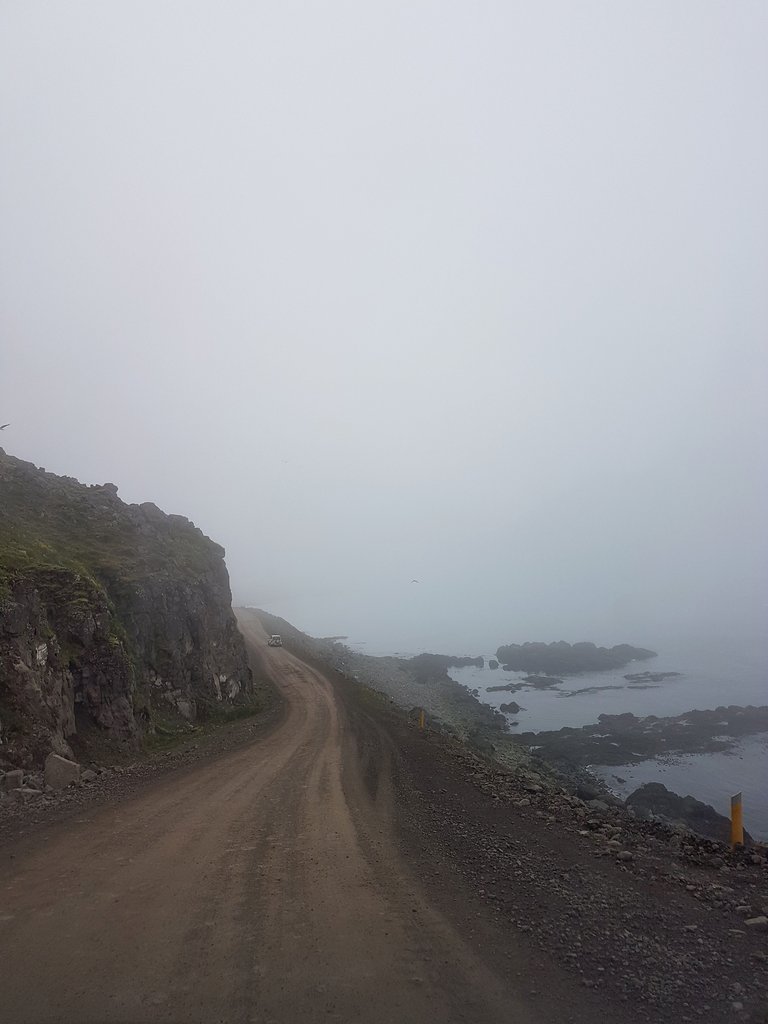
But fortunately we still have some secret places that are not filled with tourism like Strandir. It´s nice to be able to travel in nature that isn´t all crowded with people but we met just a few cars this day.
When we arrived in Djúpavik after driving for approximately two hours on a graveled road the fog had lightened a little bit.
Djúpavík is famous for it´s old herring factory but the factory is used partly today as an art festival site. But more about the factory and rest of the trip tomorrow. Sleep tight!
M.
You've been UpVoted via the UpVote Experiment 002 Bot. Depending on my VP & the price of STEEM you should get a $.01-$.03 for your trouble.
Read more about this experiment here.
Thank You - @blueorgy
Thanks!
These are such beautiful shots @mariap
Thank you Jason :)
It looks like a great trip. Iceland is definitely on the list of places I want to go.
Thank you yes it was a grate trip. You should visit Iceland some day. Even us locals love traveling around the country. There are still a lot of places in Iceland that I haven´t been to yet even though I´m born in the east and raised in the south west capital.
greate!!
Thank you :)